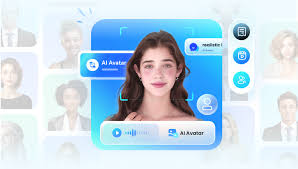When using text to speech with characters, the written dialogue or narrative is turned into spoken words that retains the individual personality and tone of every character. TTS has made major progress with the advancement of algorithms being able to produce much more human-like voices as well rich customization options available for character's voice. Generative TTS can output speech with different pitch, speed and emotion which makes it perfect for character content like audiobooks, games or virtual assistants. The good news is if everything to the right of (25) makes you cringe, then fight on and select parameters that will model your desired personality traits.
For example, reducing the rate of speech to 150-200 words per minute provides a conversational speed while dropping pitch by 10% can be more authoritative or mature. For example, in gaming or storytelling situations developers can give characters different voices corresponding to their roles through TTS tools. Tags such as voice cloning and prosody within the sector appear to be extremely efficient in adjusting how a character without any doubt sounds whereas they are conveying specific emotional elements.
The latest developments in AI-based TTS allow for more human-like characteristic voices. In 2023, a report from TTS solutions said that with neural voice synthesis, character based applications gained by up to 40% adoption. Now, users can type text and specify the voice profile to use or build a custom human character based on attributes such as energy level, accent or emotional state.

TTS is often used by fiction writers to prototype character voicesilent film s before recording an actualcast and content creators when creating cast recordings of spoken dialog for audio books or videomationletization.Processing[edit] This is particularly handy when you consider that your more conventional voice actor costs between $100 and 300$ an hour. TTS, on the other hand is highly scalable, making it easier for creators to try out multiple voice styles in seconds.
There are also accessibility solutions that incorporate text to speech with characters (often useful for those who may struggle reading) Any content that converses with you in your own voice (or rather, a monologue version of it), is relative and as such breeds relevance which triggers user engagement development. As one advocate for the accessibility of TTS shared, “TTS not only breaks communication barriers but it also makes our stories interesting more inclusively and adaptably according to personal requirements.”
Enabling character-driven TTS means tuning characteristics of voice, such as pause duration, prosody features like emphasis to capture the essence of a given char- acter for developers and creators. From characters performing to narrating in an audiobook, dynamic or customizable TTS offers a more specified and exact characteristic.
More: This is a text to speech with characters service in which you can customize their logos according the way your imaginatively etherial voices for any character would sound like.